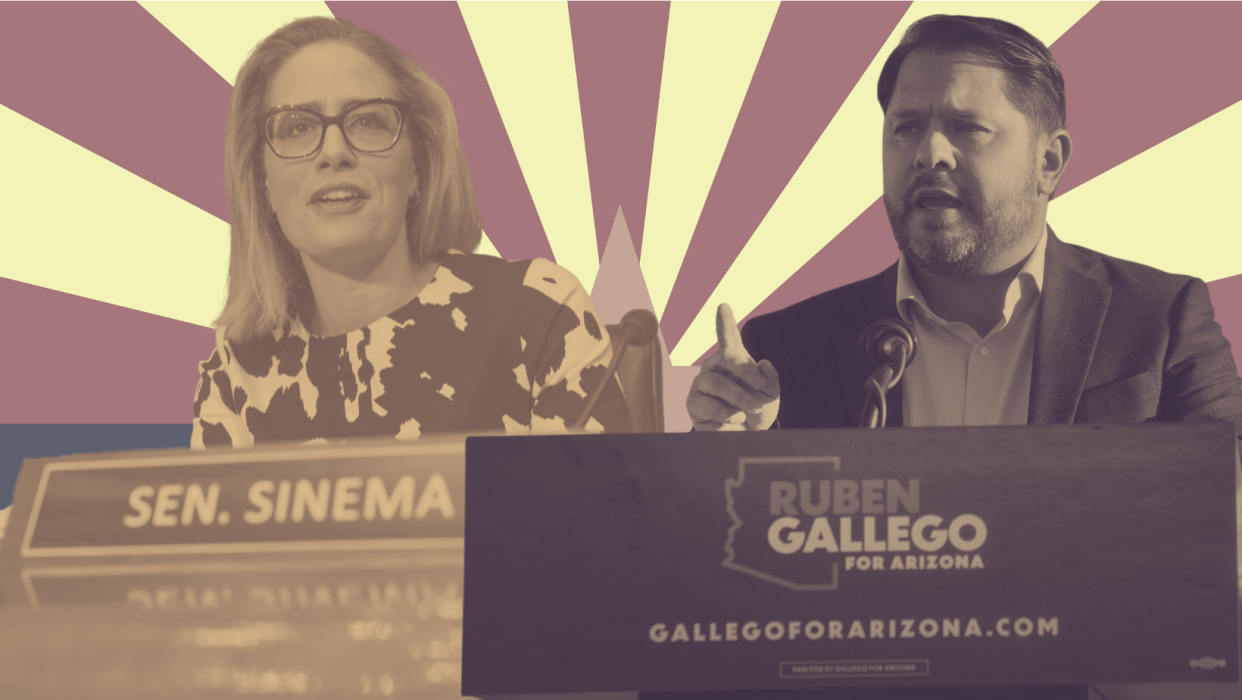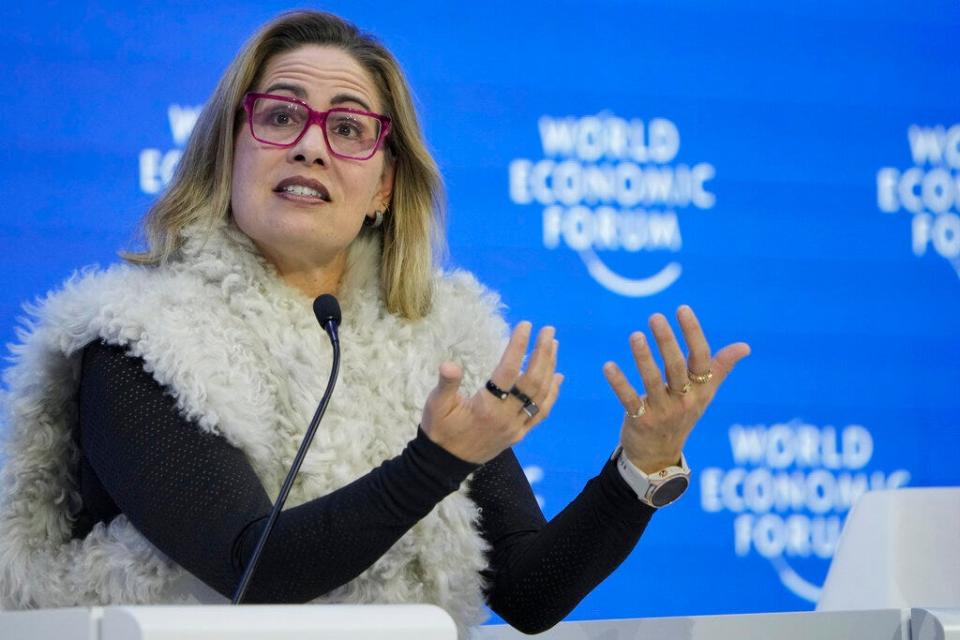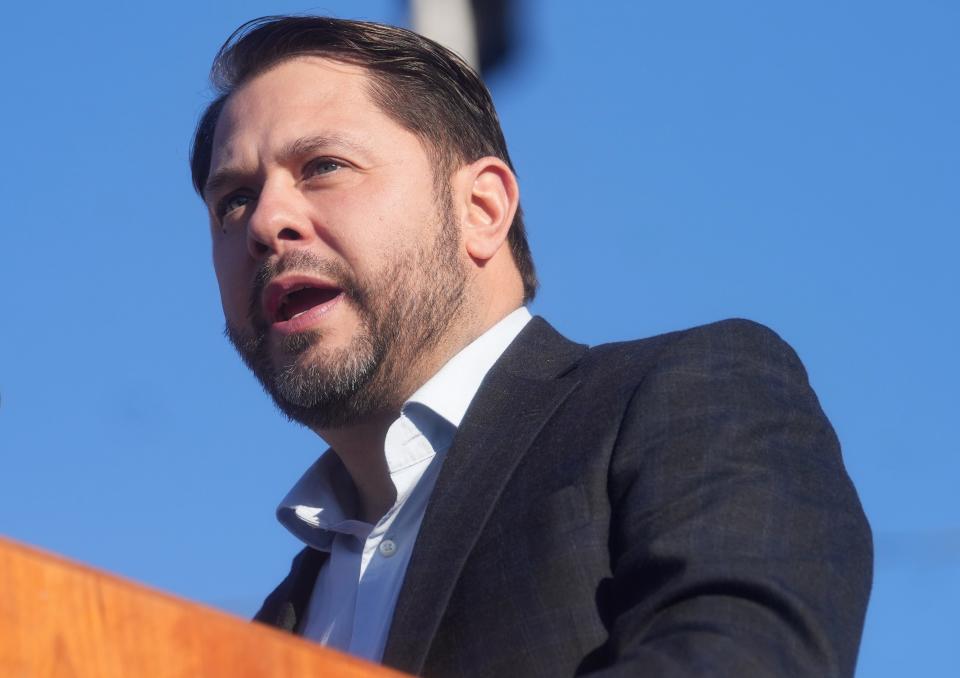Sen. Kyrsten Sinema led Rep. Ruben Gallego in fundraising, but he topped her after she left Democratic Party

- Oops!Something went wrong.Please try again later.
- Oops!Something went wrong.Please try again later.
In the last months of 2022, Sen. Kyrsten Sinema’s campaign added to her sizable cash advantage over rival Rep. Ruben Gallego’s, but his operation outraised hers in the days after she announced she was leaving the Democratic Party to become an independent.
Campaign finance reports that run through the end of 2022 offer an early glimpse of the contrasting styles that could define their campaigns if Sinema, I-Ariz., runs for a second Senate term next year.
Gallego, D-Ariz., announced Jan. 23 he is running in 2024 for the Senate seat she holds. Sinema has filed preliminary paperwork for another run, but has not officially said she is doing so. Several Republicans are considering a run as well, but no high-profile candidates have stepped forward.
Sinema’s campaign ended 2022 with $8.2 million in cash. Gallego’s campaign finished with $1.3 million.
Sinema’s campaign declined to comment about the latest reports. Gallego's noted that he raised more than $1 million in the first day after entering the Senate race and attacked Sinema as beholden to hedge-fund managers.
"Ruben Gallego has raised seven times more from Arizonans in the last week than Kyrsten Sinema did in the entire last quarter," said Rebecca Katz, a consultant to his campaign. “These numbers make their priorities crystal clear. Ruben Gallego believes in making life easier for Arizonans and their families. Kyrsten Sinema believes in making life easier for hedge fund managers.”
Katz alluded to Sinema holding out last year to preserve special tax treatment for money managers that saved them $14 billion in potentially higher taxes as part of a $700 billion domestic spending bill that focused heavily on climate change provisions.

Like all members of the House of Representatives, 2022 ended another election cycle for Gallego, which helped draw down funds throughout the year. Sinema hasn’t been on the ballot since the 2018 election.
From Dec. 10 — the day after she announced her party switch in The Arizona Republic — through the end of December, records show Gallego’s campaign outdrew hers by a pair of measures.
Sinema collected $46,000 from individuals who gave $200 or more. In the same span, Gallego collected nearly $49,000 from such individuals.
Of those post-switch individual donations, Sinema collected $625 from Arizonans, while Gallego took in $8,365 from in-state residents.
Executives in the finance industry figured prominently in Sinema’s donor base.
She collected at least $273,000 of from people employed by investors and money-management companies like Apollo Global Management, TPG and the Blackstone Group. She is a member of the Senate’s banking and finance committees.
Gallego’s leading donors were identified as attorneys and CEOs. Those occupations collectively sent him at least $18,000.

Both Sinema and Gallego collect money from political action committees, which can advocate for businesses, causes and people.
After her announcement, Sinema took in nearly $54,000 in money from PACs other than her own leadership fund and from organizations that process individual contributions.
Gallego took in nearly $28,000 from PACs in the same time.
One PAC gave to both of them in December: the one affiliated with the Air Line Pilots Association. That PAC gave Gallego’s campaign the $5,000 maximum on Dec. 16. It gave Sinema’s campaign $3,000 on Dec. 29 to reach $5,000 for the year.
Some comparisons are more difficult because Sinema and Gallego had different reporting timeframes after the elections. But a clear donation pattern separated the potential rivals.
From Nov. 29 through the end of the year, more than three quarters of Gallego’s contributors gave less than $200, the threshold for public disclosure. He raised $367,000 from such small-dollar donors in that period.
Between Oct. 1 and the end of the year, less than 3% of Sinema’s donors gave less than $200, about $8,700 in all.
Neither reported significant campaign refunds.
While it is still unclear if Arizona will have a rare, three-way race in 2024, recent history suggests any candidates will have to bring far more cash to the table than either Sinema or Gallego already have.
In the 2018 Senate race, Sinema and Republican Martha McSally each spent more than $20 million. Outside groups poured another $64 million in that race.
In 2020, McSally, then an appointed senator, spent $74 million. Sen. Mark Kelly, D-Ariz., spent $100 million and outside groups spent $83 million.
In 2022, Kelly spent at least $92 million, while Republican Blake Masters spent at least $15 million and outside groups spent $128 million.
This article originally appeared on Arizona Republic: Ruben Gallego outraised Kyrsten Sinema after her party switch

